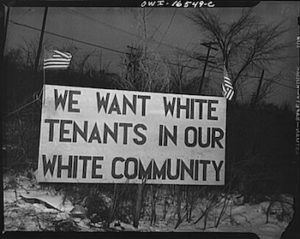
*On this date in 1943, the Detroit Rebellion occurred. The tragedy happened as Black renters attempted to enter their homes in a newly developed housing project in Motor City.
As WW II ended, Blacks who, through the Great Migration, believed they were heading to a better life found northern bigotry as pervasive and virulent as what they thought they had left behind in the Deep South. Southern whites brought their traditional prejudices with them as both races journeyed northward. On Sept. 29, 1942, a housing project planned for the newcomers began. The project was named Sojourner Truth in memory of the female Black leader and poet.
Despite being completed on Dec. 15, no tenants moved into the homes because of mounting opposition from the white neighborhood. On Jan. 20, 1942, Washington D.C. informed the Housing Commission that the Sojourner Truth project would be for whites and another site would be selected for Black workers. However, when a suitable site for Blacks could not be found, Washington housing authorities agreed to allow Blacks into the finished homes.
On Feb. 27, with a cross burning in a field near the homes, 150 angry whites picketed the project, vowing to keep out any black homeowners. By dawn the following day, the crowd had grown to 1,200, many of whom were armed. The first Black tenants (rent paid and leases signed) arrived at 9 a.m. but left the area fearing trouble. It wasn't long in coming.
Fighting began when two Blacks in a car attempted to run through the picket line. Clashes between white and Black groups continued into the afternoon when 16 mounted police tried to break up the fighting. Tear gas and shotgun shells were flying through the air. Officials announced an indefinite postponement of the move. Detroit newspapers, union leaders, and many other whites campaigned for the government to allow black workers to move into their homes.
The families, having given up whatever shelter they had in anticipation of their new homes, were left nowhere to go. They were temporarily housed with other families in the Brewster Homes and other sites around Detroit.
The Encyclopedia of African American Heritage
by Susan Altman
Copyright 1997, Facts on File, Inc. New York
ISBN 0-8160-3289-0